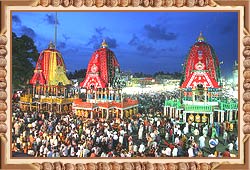
People all across the world have started making arrangements for the New Year. Year 2008 may have been a good year for some, however, for many it has not been so good. The reason being global recession resulting into large scale lay offs and pay cuts. As a result, for many the celebration for the New Year may be a low key affair. Back home, we are also going to witness less celebration owing to Mumbai terror attacks. In fact, most of the New Year shows which were supposed to showcase famous Bollywood actors and actresses have already been called off. This is indeed a great way to pay our salute to those who laid their life for the nation. In addition, security concerns have made the police more vigilant and so, most of the celebrations have been cancelled.
But, the thing that concerns me the most is the celebration that is planned for the New Year by the youngsters. Every year, we hear of some wild celebrations around this time. The most common feature of such celebrations is the involvement of young children. They smoke, booze, and dance the whole night, forgetting our old age value system. Celebration is not a bad thing, however, it has to be within the acceptable limits. How often we hear of sexual assault and sometimes, even molestation at such celebrations? The worst case is when young boys and girls drink and drive. By doing so, they not only pose a threat to their own lives, but also that of others. It is not surprising that most of the road accidents in India are the result of drunken driving. This is not restricted to only youngsters, but also grown-ups, who think that drinking is the only way to celebrate and rejoice.
In the past, we have also seen cases where indecent dance parties have been arranged by some influential people in their farm houses or 5-star hotels. For such people, these dance parties become an integral part of celebration. By hiring bar dancers, who in most cases come from financially weak families, they mock openly at our tradition, culture, and most importantly, our value system.
Are all these the right way to welcome the New Year? Instead of promising a great future for ourselves, we celebrate it wildly, without paying any heeds to our and that of others' well-being. This is high time that we all should start thinking constructively, and make our efforts to make 2009 a great year, full of prosperity, good health and growth. This is even more important as we are going through a bad phase characterised by economic slowdown, coupled with terrorist attacks on our soil. Let us all pledge to make 2009 a prosperous year for our nation, away from all insecurities that we have been living with during the last few months of 2008. This is possible by focusing on the current problems, and not wasting time in all those irrelevant wild parties.


























